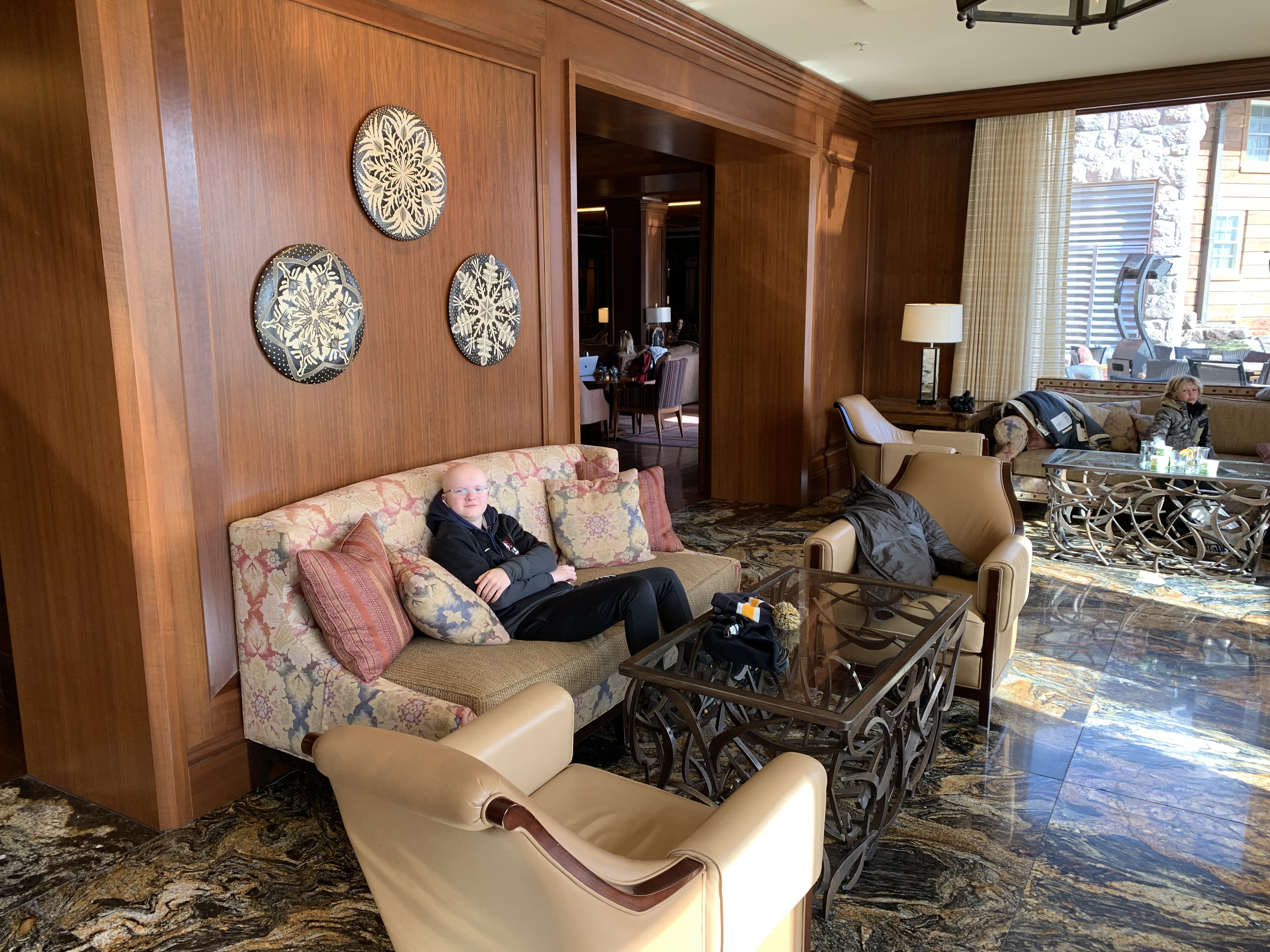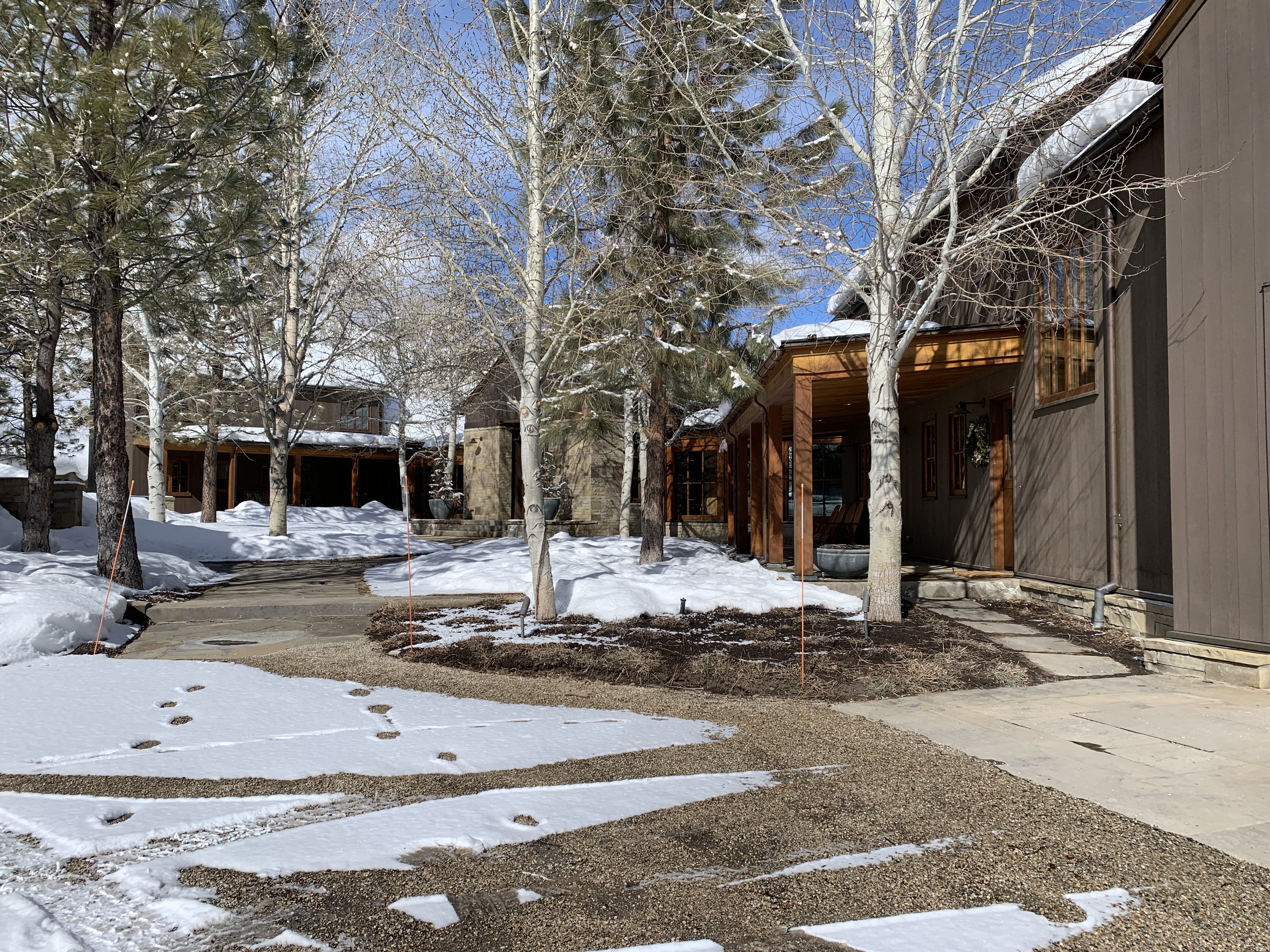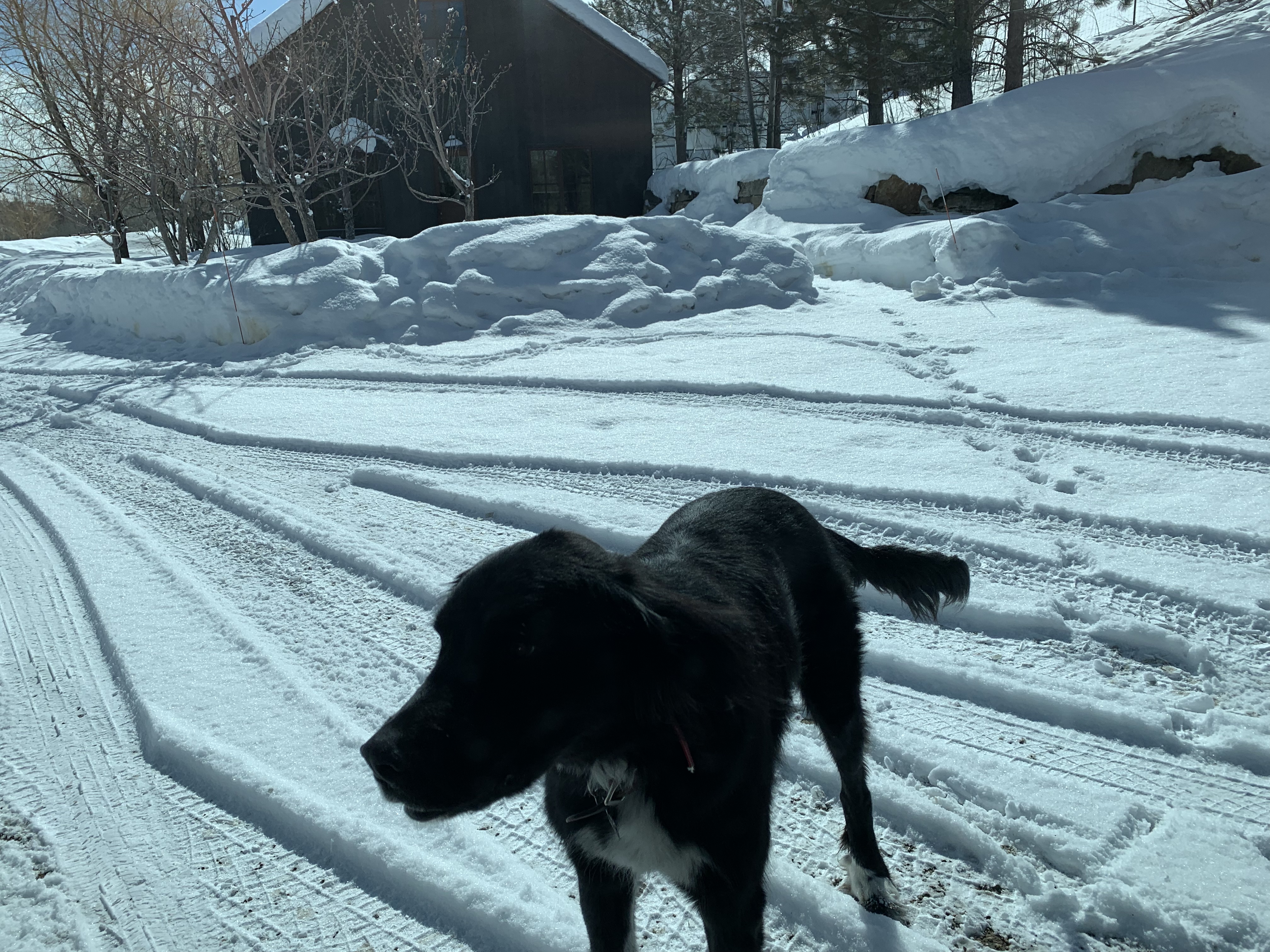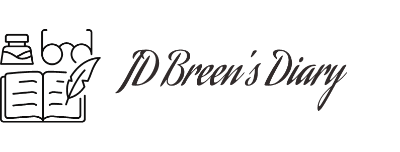Scavenger Hunt

Hailey, ID
February 23, 2022
Outside it’s cold, and quiet. A fresh layer of soft snow fell overnight. Under a clear sky, a cloak of angelic white covers the idyllic terrain. I half expect a team of Clydesdales to prance across this pristine scene.
It’s early in Idaho. As the sun rises, the son’s still set.
Teen sleep cycles keep seventeen year-olds awake well into the wee hours, and dormant deep into the day. I’ll wake David soon. We have lifts to ride and mountains to descend.
But for now, I’ve found my regular routine at our hotel in Hailey: wake up, grab my coffee, and settle into my lobby chair to read the news and record my thoughts. In a few minutes I’ll return to the room, and rustle my son.
We’ll cross the street to The Coffee House for more caffeine and a quick bite before returning to Bald Mountain. This will be our third day on the slopes. The first two were wonderful, and validated our decision to ski in Sun Valley.
Like many mountain nooks in the interior Northwest, the Wood River Valley was for thousands of years home to various Indian tribes. When the first Europeans arrived in the early 19th century, they encountered the Shoshone, Bannock, and Lehi.
The area remained relatively remote till the 1870s, when gold was discovered and Whites poured in. In the ensuing decades, Ketchum boomed, enticing eager prospectors pining for gold…and sore muscles aching for the healing power of abundant hot springs.
In the early 20th century, as the mines depleted, the tide receded. By the 1930s, barely a hundred souls called Ketchum home. Then the railroad came to the rescue, and revived the region.
To help support its line in the midst of the Depression, the Union Pacific hired a Silesian count to find the optimal location for a winter resort. Within a year, Sun Valley opened as America’s first destination ski area.
The new lodge enticed celebrities with free rooms and complimentary booze. Among those who accepted was Ernest Hemingway. He settled into what’s now Room 338, where he completed For Whom the Bell Tolls.
David and I didn’t stay at the lodge but, as Hemingway would’ve had he been here, we stopped by for a drink. We grabbed a spot in the lobby sun room, and spent an hour absorbing a scene of mid-century luxury and traditional style.

Hemingway returned here repeatedly the next couple decades. In 1959, he yielded to Sun Valley’s seduction, and bought a house.
Unlike his Key West home where the whole world walks thru, the Ketchum house is now kept hidden. It’s on the National Register of Historic Places, which lists the address as “Unknown”.
The precise location is a mystery the locals are proud to preserve. Pretending we were unaware the site is a secret, we asked at Lefty’s Bar and Grill where we could find it.
The bartender told us she was unsure, and wasn’t a Hemingway fan anyway. “I like Shakespeare”, she said, as if the choice were mutually exclusive, or that one could compare the Mona Lisa to escargot.
I’m somewhat ambivalent about Hemingway’s work. I don’t dislike it, but do think he had a tendency to cram the most words into the smallest idea. Finding his house was more about completing an impromptu quest than seeing a sacred shrine.
Whether legitimately ignorant or playing her part, the bartender asked another customer. Seated at the bar was a lifelong resident of Ketchum, who knew where the house was.
The man pulled his beer from his lips and paused pensively. He then gave a knowing nod, and said with assured ambiguity…and twinkle in his eye…that it was “somewhere near Sun Valley Lodge”.
I smiled, thanked him for the information, and knew it was a lie.
It’s as if there’s a community pact to conceal classified information. And there is. But the oath was taken at the behest of the Hemingway house neighbors. That makes sense. The last thing people want is a bunch of nosy tourists passing their homes to see a monument.
But I stuck out my snout, and decided to find it anyway. The gauntlet had been thrown down, so we picked it up, and began a scavenger hunt for Hemingway’s home. After a few more questions and a bit of research, I found the likely location.
From central Ketchum, we turned off Main Street, and drove up East Canyon Run, past a big sign that said “Private Drive – DO NOT ENTER!”
Hmm…what would Hemingway have done?
We drove under the wooden arch, and up the quiet, snowy road. At the top was a cul-de-sac with a large L-shaped structure with faux redwood and stained-timber exterior reminiscent of the Sun Valley Lodge that drew Hemingway to Ketchum. Locals joked that he bought the house because the lodge kicked him out, and he wanted a similar spot to drink.

Given the extent to which locals protected the location of this place, we half expected to be met by blaring sirens, roving spotlights, and teams of police. Instead, we were greeted by a lone black dog. He came from near the house, wagged his tail, and virtually invited us in.

We declined. We’d gotten what we came for. We needn’t see the inside of a place where the famous owner spent his last couple years, and used a shotgun to assure he’d have no more.
Hemingway is buried in Ketchum Cemetery, a couple miles from his hidden home. A simple granite slab lies between two trees, beneath a butte just outside Ketchum’s charming city center.
The gravesite is traditionally marked by liquor bottles, loose cash, pine cones, and copies of Hemingway’s work left by well-wishers leave in homage to the adventuresome author.
It’s a good thing they did. Had a beer bottle not poked thru the snow, we’d not have seen the site. I knelt down wiped snow from the stone, and saw the name and dates of the remains resting beneath.

Hemingway came to Ketchum to escape the politics and pressure of the wider world, and to have some peace.
He apparently didn’t find it, and decided he never would.
JD




My Kind of Place – JD Breen's Diary
February 25, 2022 @ 4:22 pm
[…] was part of the appeal when this site was selected as America’s first winter resort. Abundant sun, appealing elevation, and minimal wind make winters more comfortable than most might […]